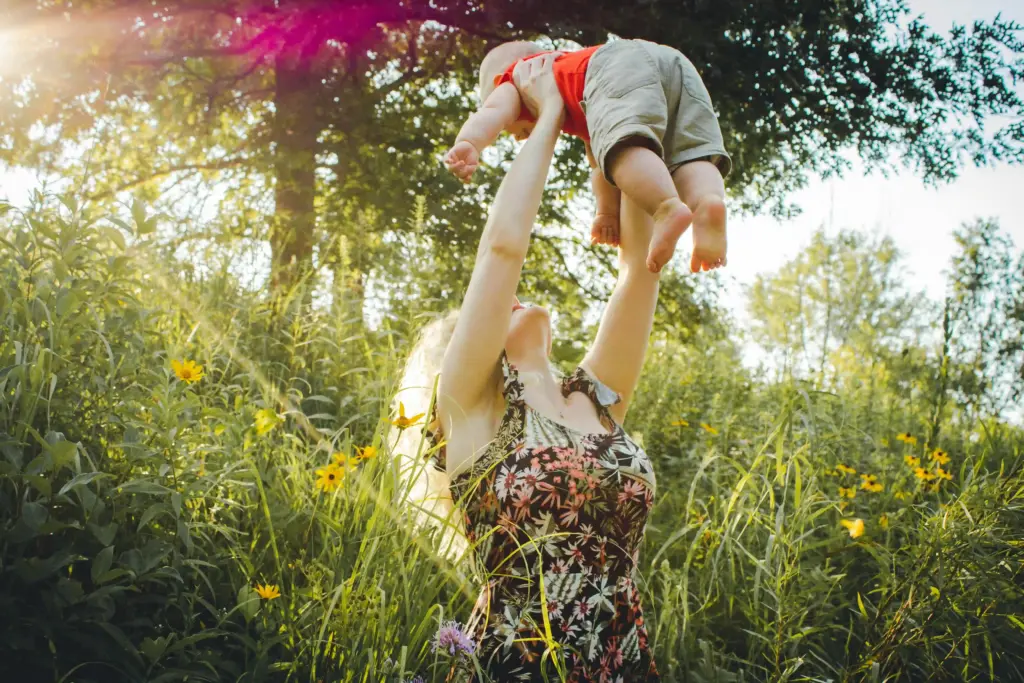
The landscape of children’s personal care has transformed dramatically in the last decade, with new parents seeking not just essentials, but experiences that celebrate early childhood with care, safety, and a touch of luxury. Among the rising trends is baby perfume—an ultra-gentle, hypoallergenic fragrance designed for infants and toddlers. Creating a baby perfume brand may seem niche, but it sits at the crossroads of innovation, safety, and sentimental value. For entrepreneurs, beauty professionals, or passionate parents with an eye for business, this market represents a rewarding blend of creativity and commercial potential.
Launching a baby perfume brand, however, is about far more than crafting an attractive scent. Success demands comprehensive research into safety regulations, procurement of certified ingredients, thoughtful packaging development, and the establishment of trusted supply chains. It’s about storytelling and building a community of parents who trust your product on their most precious customers. In this detailed guide, we’ll walk through every essential phase—from mapping the market and building a brand identity, to engineering safe formulas, selecting packaging, and finally, executing a smart product launch. Let’s journey together into crafting a brand that brings joy, peace of mind, and beautiful memories to families worldwide.
Understanding the Baby Perfume Market
Before embarking on formulation or packaging, a solid understanding of the baby perfume ecosystem is critical. Unlike adult fragrances, baby perfumes are defined by their delicate formulas, safety-first approach, and emotional resonance. The typical consumer isn’t just looking for a product—they’re looking for products that promise love, purity, and peace of mind.
What Makes Baby Perfume Different?
A baby perfume goes far beyond a pretty scent. These formulas are typically water-based, containing extremely low concentrations of fragrance (or natural extracts), and are strictly free from alcohol, parabens, phthalates, synthetic musks, and other common irritants. Their concentration generally falls within the realm of “eau de senteur,” which is lighter than even the softest adult eau de toilette. The result is a subtle, barely-there aroma reminiscent of clean cotton, soft florals, or light fruits—never overpowering or lingering heavily. These are not just marketing claims; they are absolute requirements to ensure that infant skin and breathing remain unharmed.
Market Size and Evolving Trends
Globally, the baby care market is projected to exceed $100 billion by 2026, according to data from research firms such as Statista and Grand View Research. Baby toiletries—including lotions, powders, and perfumes—are a fast-growing segment within this market, driven by a rising middle class, increased consciousness about infant well-being, and the gifting culture celebrated in Europe and Asia.
For instance, iconic brands like Mustela, Burberry Baby, and Bvlgari Petits et Mamans have established strong footholds in both Western and Asian markets. These brands have capitalized on key trends: organic/natural positioning, hypoallergenic certification, sustainable packaging, and gentle scent profiles. New challenger brands quickly gain traction with digitally native parents (Millennials and Gen Z), who value transparency, safety, and unique storytelling.
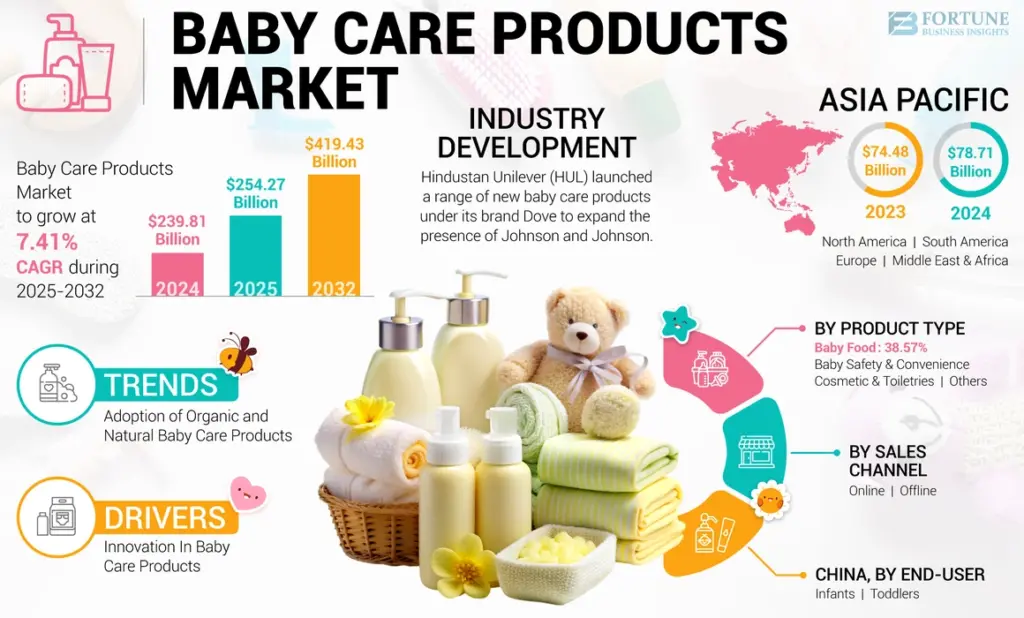
Resource from https://www.fortunebusinessinsights.com/baby-care-products-market-10426
Navigating Regulations and Safety Standards
Safety is non-negotiable in the baby category. Regulatory bodies like the European Commission (Cosmetic Products Regulation EC 1223/2009), the U.S. FDA, and specific Asian agencies all monitor the ingredients and safety standards applicable to baby fragrances. For example:
- The EU bans over 1,300 ingredientsfrom use in cosmetics, with additional restrictions for children’s products, including mandatory safety assessments and auditory reporting on fragrance allergens.
- The U.S. FDA doesn’t pre-approve cosmetics, but demands accurate labeling and prohibits any unsafe substance; class-action lawsuits are common when brands violate these rules.
- Asian countries, such as Japan and Korea, often require both safety dossiers and registration with key governmental bodies, and align increasingly with European standards for imported fragrances.
Ensuring compliance means working with a qualified regulatory consultant, having detailed documentation for all raw materials, and preparing to adapt formulations for each target market. Overlooking a single prohibited allergen can stop your brand on the runway.
Responding to Parental Concerns
Today’s parents are more discerning than ever. The rise of parental Facebook groups, review-driven e-commerce, and instant information-sharing means that a single complaint about skin irritation or “unknown ingredients” can damage your reputation. Concerns cluster around three main areas:
- Allergy Risk:Formulas must be rigorously tested to be hypoallergenic and preferably certified by a dermatologist or third-party lab.
- Ingredient Transparency:Parents demand full ingredient disclosure—no “secret fragrances” or “proprietary blends” that hide potential irritants.
- No “Nasties”:Parents actively avoid alcohol, dyes, synthetic colors, parabens, sulfates, and unnecessary chemicals.
Meeting these concerns will both build credibility and set your brand apart from competitors with less rigorous standards.
Defining Your Brand Identity
A compelling baby perfume is only as strong as the brand behind it. In crowded markets, your narrative, values, and visual presence are what build long-term trust and emotional attachment.
Zeroing in on Your Target Market
Start by specifying your ideal customer: Are you targeting affluent parents in urban centers who appreciate luxury? Budget-conscious families who want daily-use value? Gift shoppers looking for premium baby shower presents? Market research—such as online surveys, focus groups, or social media polling—can help clarify which audience will respond most passionately to your offering.
Each segment brings its own needs and emotional triggers. Luxury buyers expect exclusive ingredients and elegant unboxing experiences; mass-market buyers want clarity and value; gift givers love beautiful packaging and personalization options.
Naming and Visual Identity
A brand name for baby perfume should be easy to pronounce, warm, and evoke feelings of tenderness and protection. Names like “Little Bloom,” “Cotton Cuddle,” or “Snuggle Scent” all suggest softness and safety. Before making a final decision, conduct a thorough trademark search and ensure your name does not conflict with major players globally.
Your visual identity is equally critical. Research what colors, fonts, and imagery speak to new parents—soft pastels, hand-drawn animals, and clean, modern typography tend to score well. Commission a professional designer to create a logo, select a cohesive color palette, and draft sample packaging for feedback.
For example, the luxury line “Bvlgari Petits et Mamans” uses cheerful, watercolor-style animal illustrations paired with a gentle pastel color scheme, signaling both playfulness and refinement.
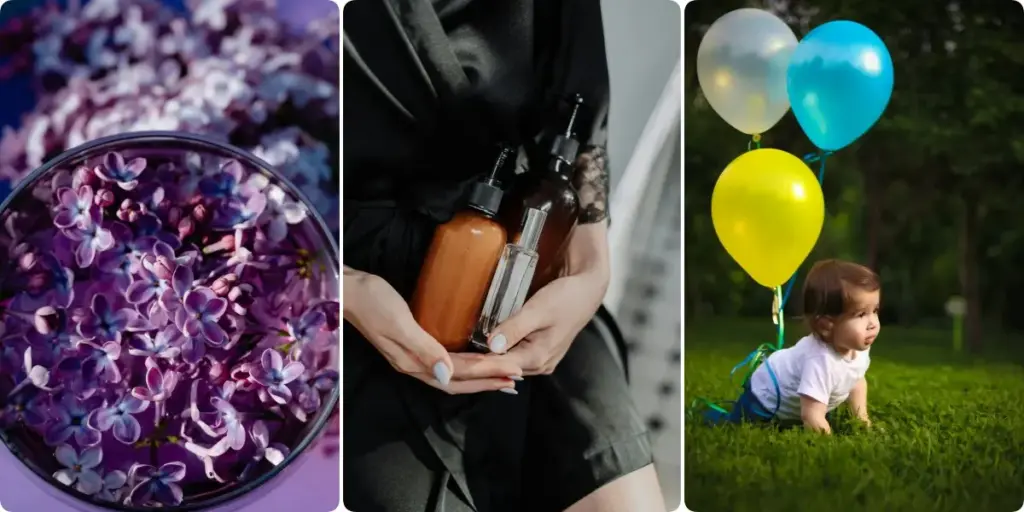
Storytelling and Brand Values
Today’s best-loved brands win hearts by sharing meaning, not just ingredients. Tell the story of your founding—perhaps inspired by a cultural bonding ritual, a grandmother’s wisdom about gentle botanicals, or your own journey as a parent. Communicate values like:
- Non-negotiable safety and ingredient integrity
- Emotional connection—celebrating milestones, soothing bedtime routines
- Environmental consciousness (biodegradable packaging, ethical sourcing)
- Giving back (donating to children’s causes for every sale)
Clearly articulate these values on your website, product packaging, and marketing materials. Stories create emotional “stickiness” that can inspire loyalty and word-of-mouth advocacy.
Building and Sustaining Trust
In the baby category, trust means everything. Ways to build this foundation include:
- Third-party certifications: hypoallergenic, organic (USDA, Ecocert), cruelty-free
- Visible safety endorsements: dermatologist/laboratory-tested badges, transparent documentation
- Real reviews from other parents, pediatricians, or influencers
- Transparent customer service: easy access to answers and personal interactions
The more trust you build, the more likely parents are to make repeat purchases and recommend your brand, even in a market full of alternatives.
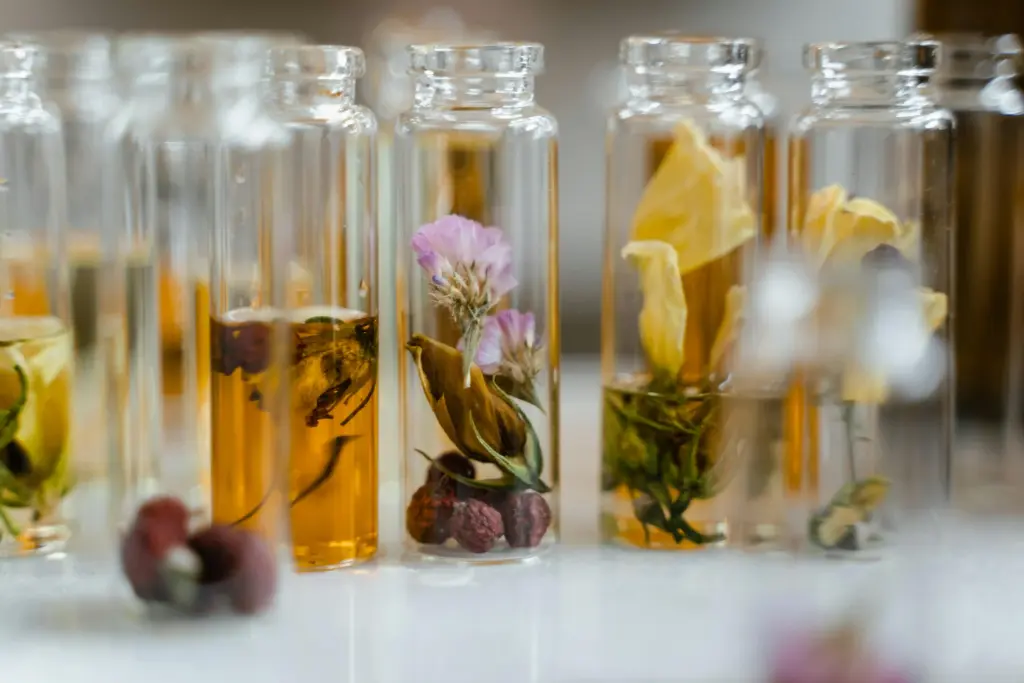
Creating Your Product Line
Your product range sets the tone for your brand and drives both initial sales and repeat purchases.
Core Products and Extensions
Most successful brands start with a core product, such as a hypoallergenic baby perfume mist in a range of two or three gently different scents. Over time, they add:
- Body mists: slightly larger, for use after baths or before bedtime
- Scented hair mists: for toddlers with longer locks
- Gift sets: themed boxes with a perfume, baby lotion, and plush toy
- Travel sizes and trial sets: lower stakes for first-time buyers, perfect for gift baskets
For instance, Mustela offers both a signature fragrance and bath accessories, while niche brands may specialize in seasonal scent collections or personalized blends.
Selecting Scent Profiles
The signature of baby perfumes is softness—formulas designed not to linger loudly but to evoke comfort and love. Top choices include:
- Floral: Think chamomile, orange blossom, rose, or mimosa—delicate and soothing.
- Fruity: Pear, apple, peach, and melon are popular for their clean, sweet (never tart) aspects.
- Herbal and powdery: Lavender, vanilla, or soft rice powder notes provide a soothing background.
Cultural factors may influence choices: in Asia, green tea or peach blossom is popular; in France, orange flower is a classic.
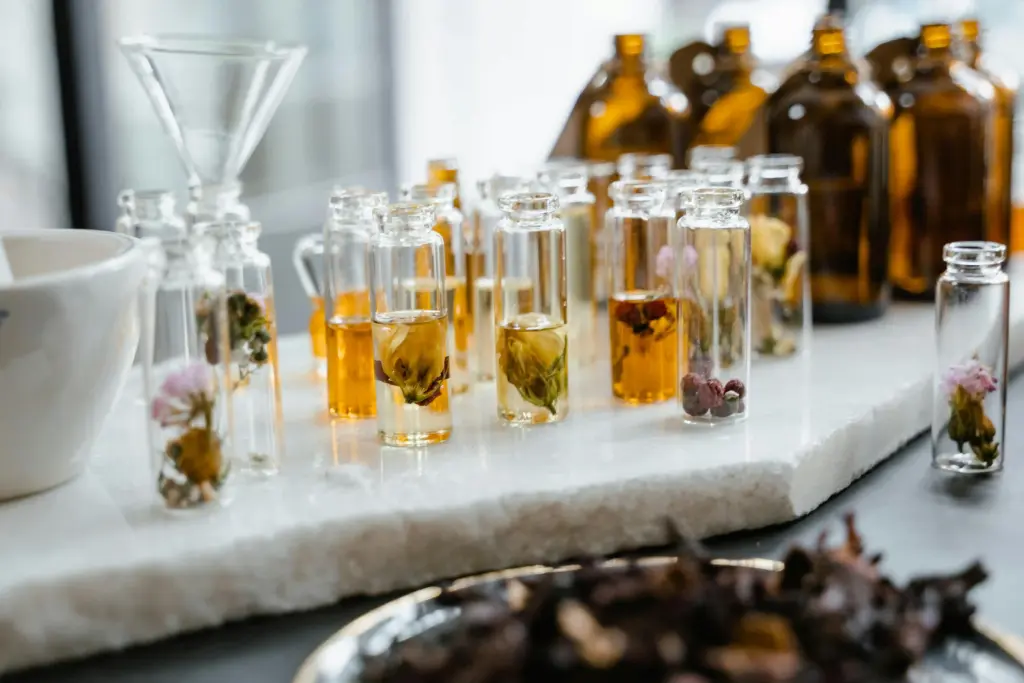
Ingredient Criteria and Clean Beauty
In your formulas, less is more. Choose only necessary, multi-benefit components:
- Water (purified and microbiologically safe)
- Natural hydrosols (like chamomile water or rose water)
- Ultra-low concentrations of IFRA-compliant essential oils or extracts
- Gentle preservatives (as required; opt for food-grade and tested options)
Strictly avoid any ingredient flagged by public regulatory lists (for example, any of the 26 fragrance allergens on the EU’s required-label list), as well as those associated with sensitivity or controversy, such as parabens, formaldehyde donors, phthalates, or synthetic dyes.
Highlight your “free from” status boldly on your label and marketing materials. If your product is vegan, plant-based, or contains locally sourced botanicals, make sure those points are visible in your story.
Developing Baby-Safe Perfume Formulations
Your product cannot come to life without a thoughtfully developed, scientifically validated formula.
Fragrance Architecture for Baby Perfumes
Traditional perfume features three layers: top (the initial scent), middle (the character that lingers), and base (the foundation, which lasts the longest). For babies, avoid heavy, long-lasting base notes and focus on bright, gentle top and middle notes that evaporate quickly and leave only a whisper of scent.
For example, a simple “Cotton Blossom” fragrance might include:
- Top notes: pear, chamomile, mandarin
- Middle notes: orange blossom, rose, cotton flower
- Base notes: a hint of vanilla or white musk (at micro concentrations, if at all)
Selecting Safe, Gentle Ingredients
Safe baby fragrance starts with a meticulous review of every ingredient. The best practice is to work with supplies that provide Certificates of Analysis (COAs) and comply with IFRA (International Fragrance Association) standards limiting both the choice and concentration of each component.
Essential oils can be problematic—many are too strong for young skin and developing respiratory systems. Those that may be safe (like lavender or chamomile) must be used in extremely low percentages, and even then tested extensively. Many brands, therefore, use hydrosols, which are produced during essential oil distillation and retain a soft aroma while being much milder.
When in doubt, opt for fragrance-free or all-natural options, or consult with a certified pediatric dermatologist and fragrance chemist.
Collaborating With Experts
Do not attempt to formulate alone unless you have years of experience in cosmetic chemistry. Even the smallest error—an overly strong essential oil, a non-compliant preservative—can render your product unsafe or even harmful.
Choose a cosmetic chemist or an expert fragrance house with experience in sensitive-skin and children’s formulations. Companies like Givaudan, Firmenich, and Symrise are long-established fragrance suppliers with decades of experience in skin safety and regulatory compliance. For smaller scale or local production, consider independent, regionally certified fragrance consultants.
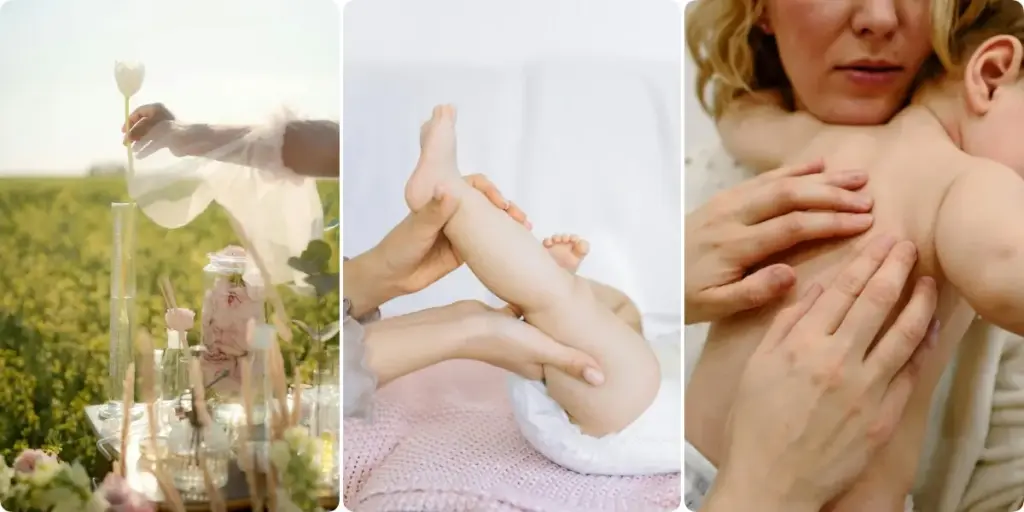
Testing for Absolute Safety
The regulatory gold standard includes:
- Dermatological Testing:Performed by a certified lab on both adult and baby skin to ensure hypoallergenicity and zero irritation.
- Patch and Stability Testing:Samples are applied to the skin and left over a period to detect any delayed reactions; formulas are tested under various temperature and light conditions to ensure no decomposition or ingredient separation over time.
- Microbiological Testing:Critical for water-based formulas, to guarantee no microbial growth over six months to three years under shelf conditions.
- Certification Approvals:Seek badges like “Dermatologist Tested,” “Hypoallergenic,” and, if applicable, “Organic” (with clear, recognized certification; do not make up or exaggerate claims).
Be prepared to document every test and provide clear, transparent safety information to parents—trust is won and lost at this step.
Selecting and Managing Packaging Suppliers
Even the gentlest formula can fail if your packaging endangers a child, frustrates parents, or undermines your brand’s appeal.
The Critical Role of Packaging
Baby product packaging must satisfy a unique combination of safety, hygiene, emotional appeal, and functionality. It needs to look beautiful on a nursery shelf and withstand constant handling and transport. Packaging can be a crucial differentiator, especially as “unboxing” is increasingly part of the modern customer experience.
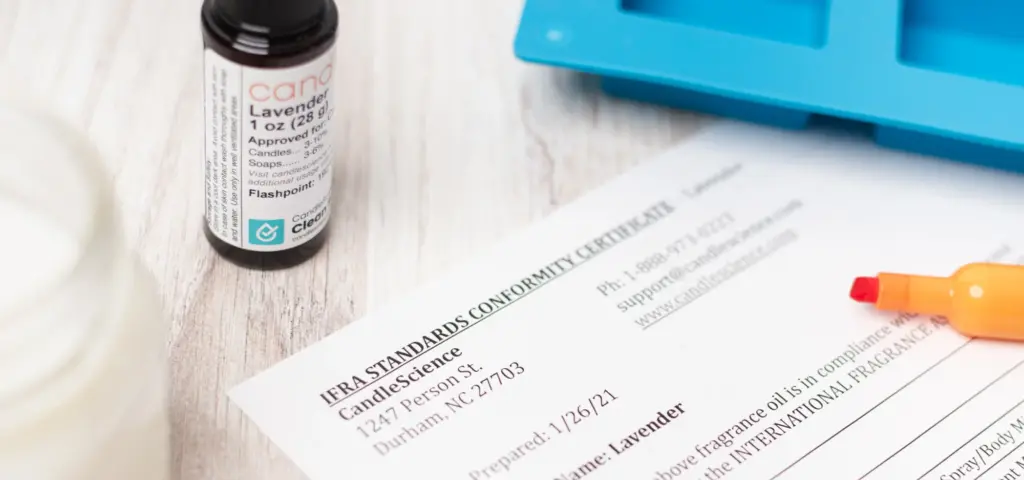
Researching and Shortlisting Suppliers
Find packaging partners that specialize in either cosmetic or infant products—both categories demand strict certification and experience. B2B platforms like Alibaba, Global Sources, and regional trade shows (Cosmoprof, Luxe Pack) are starting points, but always move quickly to in-depth vetting.
Look for:
- Verified compliance: ISO, GMP (Good Manufacturing Practice), food-contact certification
- References from established cosmetic or baby brands
- Clear records for sustainability initiatives (recyclable materials, minimal packaging waste)
- Proven ability to scale quantities from small launch batches to large orders
Material and Safety Considerations
- Materials: BPA-free and phthalate-free plastics, borosilicate glass (for premium lines), or recyclable PET are industry standards. All must be shatter-resistant and certified for non-toxicity—even the bottle’s spray pump and cap.
- Functionality: Mist sprayers should create a fine cloud, not a jet, and must not leak, clog, or be too difficult for a parent to operate with one hand.
- Tamper-evidence and childproofing: Ensure the packaging cannot be easily opened by an infant or toddler. Some brands add a locking mechanism or require dual-action opening.
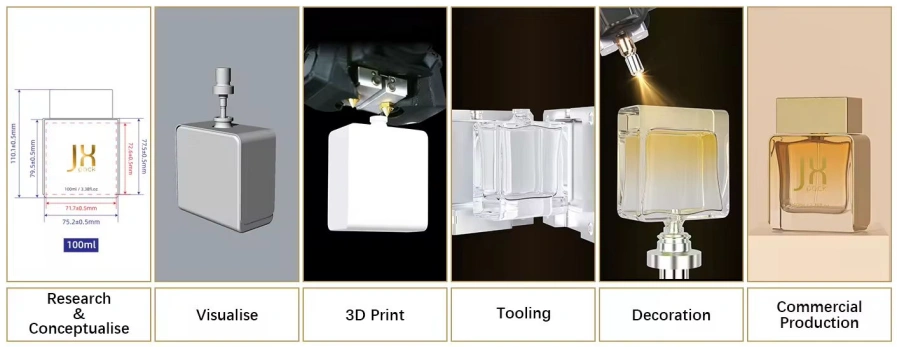
Customization and Brand Integration
For baby-focused brands, packaging is a big part of the “magic”:
- Custom bottles: Uniquely shaped bottles (teddy bear, cloud, or flower) create a lasting impression.
- Color printing and graphics: High-quality, pastel-based printing, foil accents or soft-touch finishes help your product stand out.
- Gift sets: Custom outer boxes, reusable pouches, or keepsake tins add both value and emotional resonance.
You should request prototypes with your logo or labels applied as you intend to see and feel the finished product.
Sustainable Packaging Innovations
Modern parents increasingly value brands that minimize environmental impact. Options like PCR (post-consumer recycled) plastic, renewable plant-based materials, glass with biodegradable coatings, and eco-conscious shipping (minimal, recyclable padding) will increasingly become expected rather than exceptional. If you make a sustainability claim, ensure it’s backed up with credible data and third-party audit or certification wherever possible.
Sample Testing and Quality Assurance
Before signing a contract, order samples and run stress tests:
- Drop bottles multiple times from waist height to simulate mishandling
- Fill with your actual formula, leave in sunlight or heat to test for reactions
- Get feedback from your target parent audience—does the spray mechanism feel comfortable? Is the bottle ergonomic, light, and attractive?
Pricing, Quantities, and Contracts
Clarify all details in writing before placing an order, including:
- Minimum Order Quantities (MOQs): Some manufacturers won’t go below 10,000 units; others specialize in short runs.
- Customization costs: Printing, mold charges, colored plastics, and embossing all add expense.
- Lead times: Bottle production can take 1-3 months, especially for custom molds or overseas suppliers.
- Contingency plans: Negotiate remediation for production delays, shipping mishaps, or defective batches.
Create contracts that protect your intellectual property, require confidentiality, and clearly spell out payment schedules and quality standards.
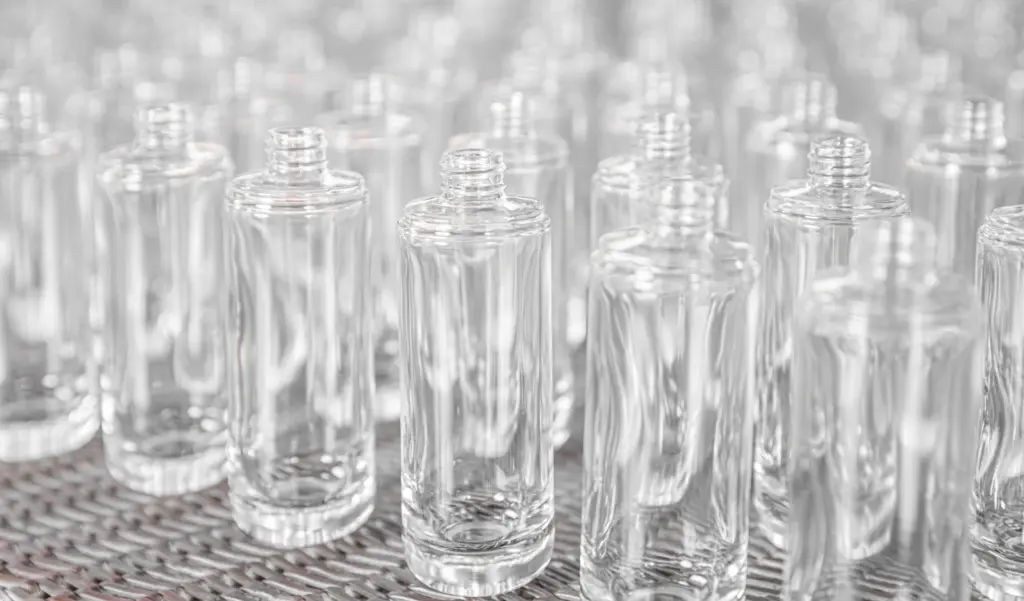
Prototyping and Pre-Launch Preparation
You now have your formula, packaging, and branding. But before going to market, rigorous pre-launch research and preparation are critical.
Creating Prototypes
Have your chosen manufacturing partner produce a batch of full prototypes, integrating your selected scent formula, final packaging, and labeled branding. This prototype is your litmus test for every system—will the fragrance react with the plastic? Will the labeling withstand baby wipes and water splashes? How does it feel in the hand, and does the packaging look premium up close?
Extended Testing and Parent Feedback
No substitute exists for real-world parent testing. Set up focus groups featuring your target customer base, send out trial kits, and contract a UX research specialist if resources allow. Key questions to answer:
- How do parents describe the scent experience?
- Is the bottle easy to open? Spill-proof? Travel-friendly?
- Does the product survive daily use—no leaking, no breakdown of label or mist pump?
- Are parents reassured by safety claims and certifications?
Iterate ruthlessly. Even slight issues—a spray that clogs, a label that peels—can doom your product at scale.
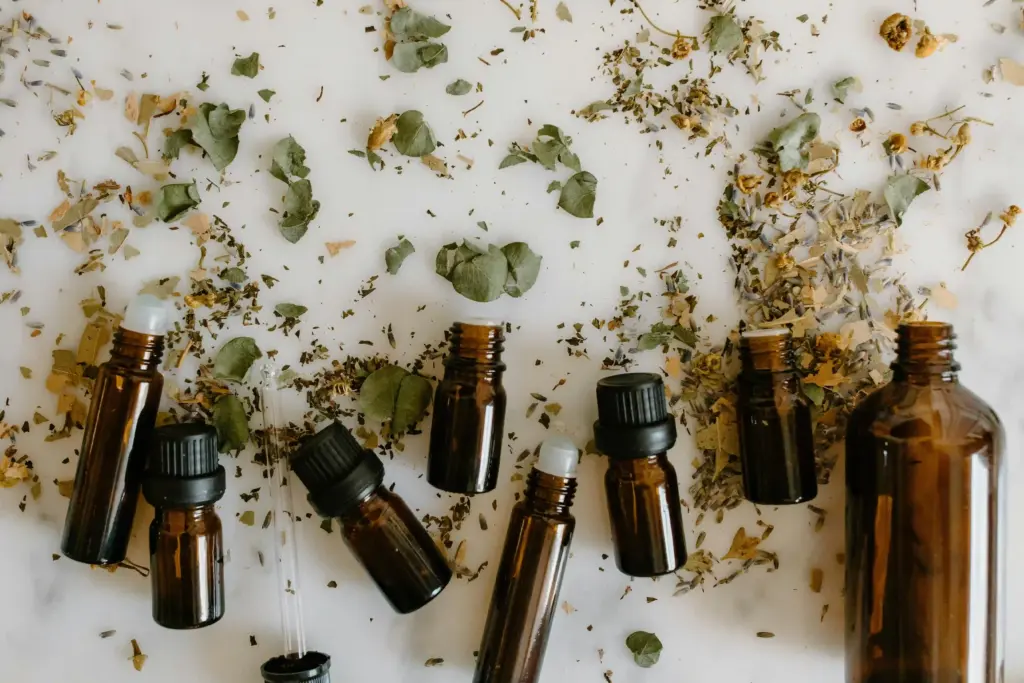
Safety, Stability, and Compliance Testing
Before launch, required tests in most jurisdictions include:
- Extended shelf-life and stability tests—ensuring no separation, mold, or microbe growth over 12-36 months.
- Simulated transport and usage—heat/cold cycles, shaken vs. stored, drop-tested for moms on-the-go.
- Legal and regulatory review for every country of launch: clear labeling (“for external use only”, age rating), batch codes, and regulatory registration.
Hire a regulatory compliance expert if you plan to sell internationally—mistakes are costly and public.
Supply Chain and Logistics Setup
Now plan how your product will get from production to your customers:
- Confirm reliable sourcing for all ingredients and packaging (multiple suppliers where possible).
- Choose a contract manufacturerexperienced in small-batch, sensitive-product filling (for initial runs).
- Vet logistics partners for warehousing, shipping, returns, and international commerce.
Launching and Marketing Your Baby Perfume Brand
Now comes the real test—bringing your vision to families and building brand loyalty in a noisy market.
Strategic Launch Channels
Successful brands rely on a well-coordinated multi-channel launch. Essentials include:
- E-commerce:A beautifully designed, easy-to-navigate website showcasing detailed product information, transparent safety/testing details, and a rich brand story. Integrations with Shopify, BigCommerce, or WooCommerce make setup easier.
- Partner retailers:Collaborate with specialty baby stores, boutiques, pharmacies, and high-end department stores. Consider exclusive first-release deals.
- Parenting events/fairs:Exhibit at baby expos, prenatal classes, or parenting summits to boost visibility and gain live feedback.
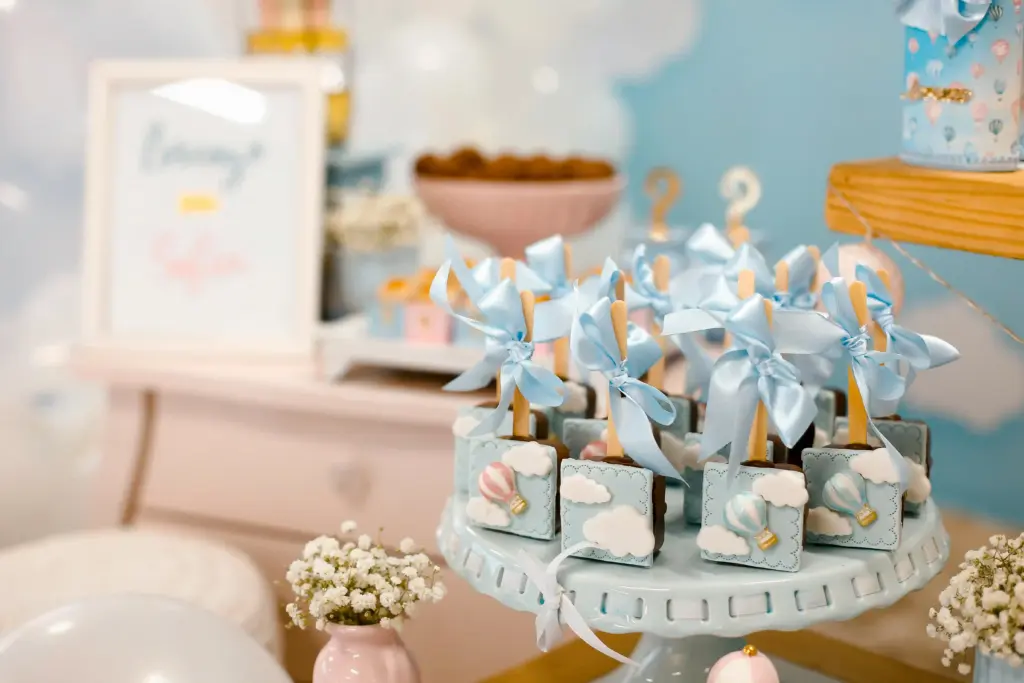
Emotional Storytelling and Content Marketing
Use content to educate and inspire. Share the story of your brand’s founding, your commitment to every ingredient, your safety-first promise, and your process of testing and parent feedback. Publish blog posts on “Why Baby Perfume Matters,” “How to Choose Safe Products for Your Child,” and behind-the-scenes videos of scent creation or packaging assembly.
Content marketing should also address common parent questions, such as “What makes baby perfume safe?” or “How is your product different from ordinary fragrances?”
Influencer Partnerships and Social Proof
Work with:
- Mommy bloggers and family influencers: Seed free products (with clear no-strings-attached requests for reviews) and offer referral incentives.
- Pediatricians, midwives, and baby product experts: Their trusted voices can offer authority and answer skeptical parent questions.
- User-generated content:Prompt customers to post unboxing videos, nursery photos, or testimonial stories. Launch a hashtag that’s easy to remember and aligns with your brand (such as #SnuggleScent or #GentleMemories).
Creating Exceptional Customer Experiences
Surpass expectations with:
- Polished unboxing—thoughtful packaging, a handwritten note, or a keepsake item like a “Baby’s First Scent” certificate.
- Responsive customer support—live chat, clear returns, and fast resolution of queries.
- Loyalty programs—invite repeat buyers to join member communities, offer early access to new scents, or create a “scent memory” scrapbook sent after a repeat purchase.
Growing Through Honest Feedback
Encourage feedback at every turn—via post-purchase emails, review reminders, or in-package prompts. Don’t shy away from publishing less-than-perfect reviews alongside five-star approvals; authenticity breeds trust. Actively thank and reward customers who share honest assessments, and use constructive criticism to fuel iteration and refining of both product and service.
Scaling and Sustaining Success
Ready to scale? Here’s how to build longevity and unlock new markets.
Managing Growth and Production
With increased demand comes the need for robust operational systems. Work with your partners to forecast sales, monitor inventory in real time, and automate fulfillment where possible. Consider onboarding a third-party logistics company (3PL) so you can focus on branding and R&D rather than shipping management.
Diversifying Product Range
Gradually introduce line extensions: holiday-edition bottles, custom gift sets for special occasions (birthday, “baby’s first bath”), or new scent families tailored to regional preferences. Survey your customer base for input on future scents and offer a “limited-run” pre-sale to test popularity and manage risk.

Expanding to New Markets
International growth requires compliance with each jurisdiction’s rules—be it labeling standards, banned substances, or packaging languages. Localize both packaging and website content for new markets to build trust and relevance.
Research local gifting customs—what’s popular in Japan or Brazil may differ from the U.S. or U.K. Partner with local influencers and retailers to generate initial buzz.
Fostering a Community of Advocates
Parent-led brands thrive on loyalty and community. Create a private Facebook group for fans, host workshops or online Q&As, run “baby scent stories” contests for user-generated content, or donate a portion of profits to children’s charities with community-voted selection.
Troubleshooting and Lessons Learned
No brand launch is flawless. Beware these pitfalls:
- Ingredient missteps:A single overlooked allergen can force a recall and destroy parent confidence.
- Trademark conflicts:A poorly-researched product name or logo can result in years of legal strife.
- Supplier failures:An unreliable bottle supplier or formulation chemist can delay launches by months and cause cash crunches.
- Overexpansion:Rapidly diversifying your product line before establishing brand loyalty dilutes trust and increases operational chaos.
Learn from competitors—read industry case studies, study viral failures, and always, always stay humble and close to your parent community.
Conclusion
To create a baby perfume brand that wins the hearts and trust of new parents isn’t simply a matter of making something that smells nice. It’s a complex but rewarding undertaking that fuses science, safety, emotional branding, and enduring values. From regulatory navigation and gentle formulation, through thoughtful packaging, prototyping, and community-launch tactics, every detail matters.
Stay uncompromisingly honest about safety, stay innovative in formulation and storytelling, and always invite families into your journey with you. As you grow, you’ll not only make a business impact—you’ll craft scents that create cherished memories, comfort restless infants, and become a joyful part of family traditions worldwide.
